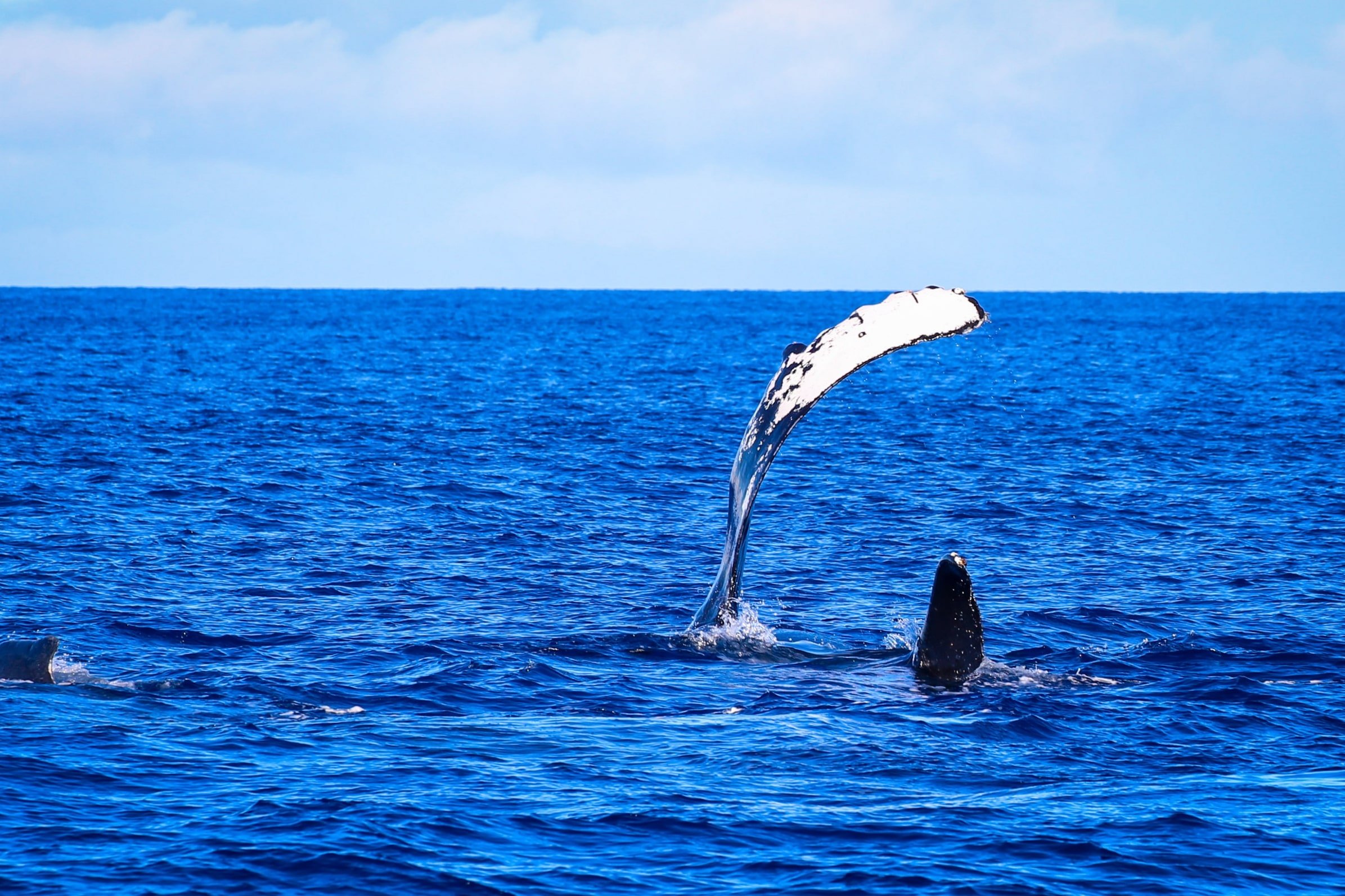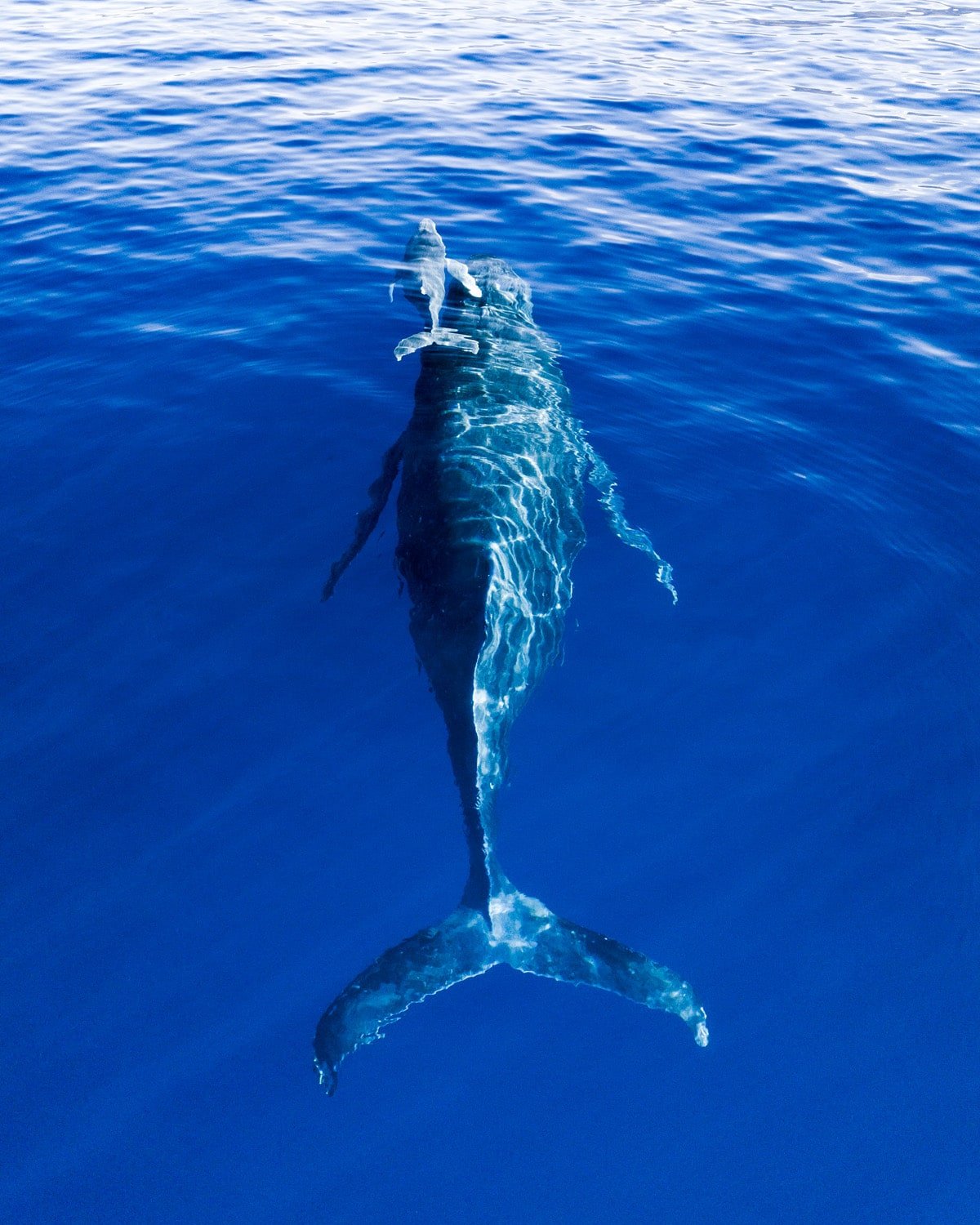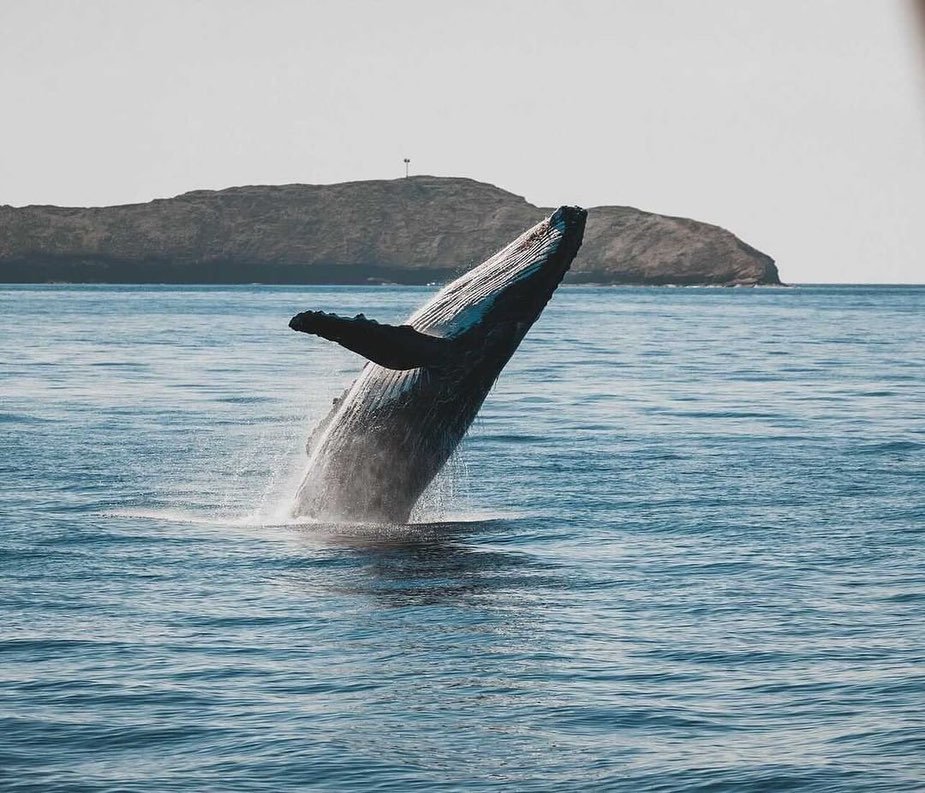What Is The Best Month To Go Whale Watching In Maui?
Considering we operate seven different boats that offer Maui whale watching tours, it’s one of the questions we hear all the time:
“When is the best month to go whale watching in Maui?”
Officially, whale season in Maui runs from December 15th-May 15th, although it’s still possible to see whales outside of the official“whale season” dates.
While the first Maui whale sighting differs every year, it’s usually sometime in late September that the first whales are spotted off Maui.
Our Trilogy boats usually spot a whale by some time in early October, and by Thanksgiving it’s almost a guarantee that if you go on a Maui snorkeling tour you’ll spot a couple of Humpbacks.
After all—since “whale watches” don’t start until December 15th, your best bet for seeing an early-season whale is to book a Mani snorkeling tour and cross your fingers for some whales!
So Is There A “Peak Season” To See Whales in Maui?
Absolutely.
December 15 — January 15 is still early in the season, and the peak season for whale watching in Maui is from the middle of January through March.
Once the calendar strikes April 1, the number of sightings tend to fade by the day, and by the end of April the sightings have subsided—even though it’s still in “season.”
That said, it’s still possible to see the occasional whale all the way up through the end of May, and we’ve even seen a couple of stragglers still here in the first week of June!
Do The Types of Sightings Change During The Season?
Yes!
One of the great things about whale watching in Maui is that no two tours are exactly the same, and a whale watching tour at the beginning of the season can be completely different from one toward the end—you just never know what you’ll get.
While there are always outliers, traditionally, the first whales that arrive in autumn are adolescent, juvenile males.
Humpbacks don’t reach sexual maturity until approximately seven years old, which means that whales that are younger than seven won’t be mating during their time here in Maui.
That said, they still make the journey (because hey, the water’s still warm!), and they learn the competitive mating process from the older males, (who are usually next to arrive.
Also, when the first whales are spotted in Maui during late September and October, they usually aren’t very surface active since they’re pretty tired from swimming 3,000 miles down from Alaska !
There’s the chance you’ll see a spout or a fluke, but the level of activity isn’t nearly as high as the maneuvers in the peak of the season.
Next to arrive are usually the females, who are first spotted a few weeks after the early-arriving males.
Many of the females who arrive in the fall are pregnant and ready to give birth, having conceived the calf about 11 months prior during the last year’s whale season in Maui.
Since baby humpbacks weigh about a ton at birth, you can imagine it takes a little longer to swim when carrying a 2,000 lb. baby!
Other females make the swim from Alaska with their adolescent, 1-year old calves. When baby humpbacks are born in Maui, they typically spend an entire year nursing and feeding with their mother.
They’ll learn to migrate between Maui and Alaska and will learn to how feed once they get there, and when they return to Maui the following year, they will eventually swim off on their own.
By the time whale season officially begins, the water is teeming with splashes.
Groups of males form "competition pods" for the right to mate with a female, and since they've had time to rest from the long swim south, all the whales become more surface active with their powerful, aerial displays.
By the beginning of February, we begin to get a lot more sightings of small, newborn calves.
When first born they aren't very active and mostly rest on the surface—often on the nose of their tired mother who pushes them to the surface to breathe.
Once they're about a month old, however, it's more common to see the babies mimicking mom’s breaches and playfully splashing at the surface.
The splashes are smaller and the leaps less powerful, but there is a degree of "cuteness" to a breaching calf that a fully-grown adult can't match.
Finally, by the end of April and beginning of May once the season is starting to wind down, it once again becomes a sea full of males who are looking for one last fling.
Of the few females who are still remaining, the majority are busy nursing their young, or making sure they have enough energy to endure the journey back north.
As you can imagine, there’s a delicate balance to nursing a whale and swimming 3,000 miles, where if you leave too soon you run the risk of the calf being too weak to make it—but if you stay too long while nursing without eating, you might become too weak yourself.
Aside From The Best Time Of Year To See Whales, Is There Also A Best Time Of Day For Whale Watching Tours In Maui?
Yes—and no. It all depends on your desired comfort and good old fashioned luck.
Typical Maui weather patterns mean that morning hours are glassy and calm and afternoons are choppy and windy. What this means for anyone whale watching in Maui is that the morning hours are often the best for the calmest, smoothest conditions.
Also, it's much easier to spot whales when the water is calm—as opposed to a sea that's full of whitecaps and you can barely make out their spout.
That said, some studies have suggested that humpbacks actually surface more when it's windy. Researchers have posed the theory that the wind feels like a light "tickle" whenever they come to the surface, and we've often noticed during our Maui whale watching tours that repeated breaches and surface activity can happen when the water is choppy.
Also, since humpback whales need to surface every 30-45 minutes (in order to breathe), this means that their sleep cycle is a series of naps that can happen at any time of day.
There is no one time that the whales are "awake" and another when they are asleep, so the only real difference with time of day is the calmness and comfort of the ride.
So If I Visit Maui From January-March I'm Guaranteed To See Whales?
The question here isn't IF you'll see whales—it's choosing which ones to watch. Since Maui County has the world's densest population of Humpbacks, there will often be times where we end up surrounded by numerous groupings of whales.
Usually we'll choose the whales that are most active versus those just logging on the surface, and with all of the excitement that can happen at any moment, the winter months are the perfect time for whale watching tours in Maui.
Have more questions about whale watching in Maui? Leave them in the comments below!
Trilogy adheres to DOLPHIN SMART Guidelines: All photos and videos were taken while viewing from a responsible distance. The whales in these photos and videos approached the boat while the engines were in neutral or off.
All underwater photos and videos of dolphins and whales were taken with a remote device while following guidelines for responsible viewing. More information on Dolphin SMART http://sanctuaries.noaa.gov/dolphinsmart/welcome.html






